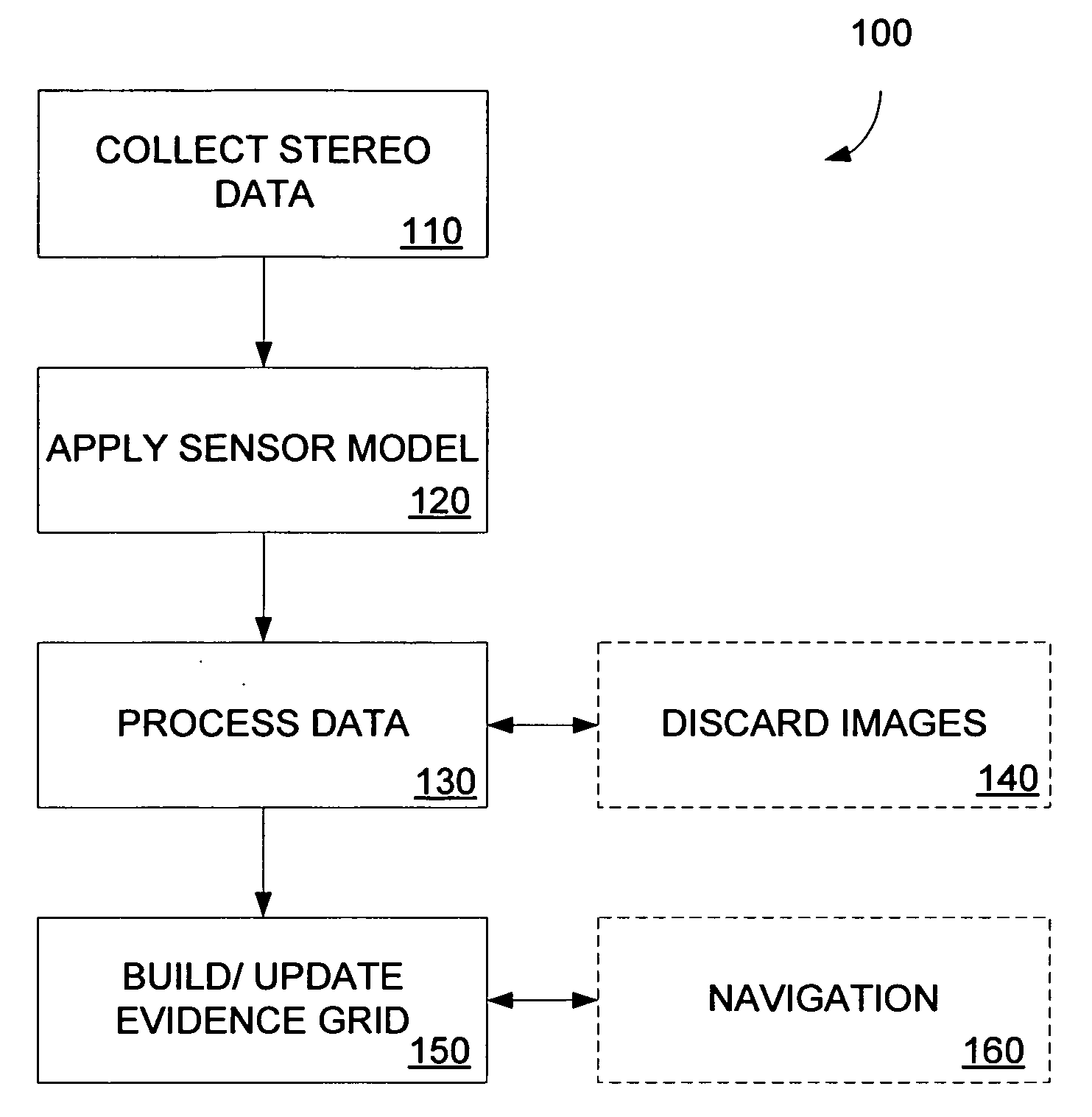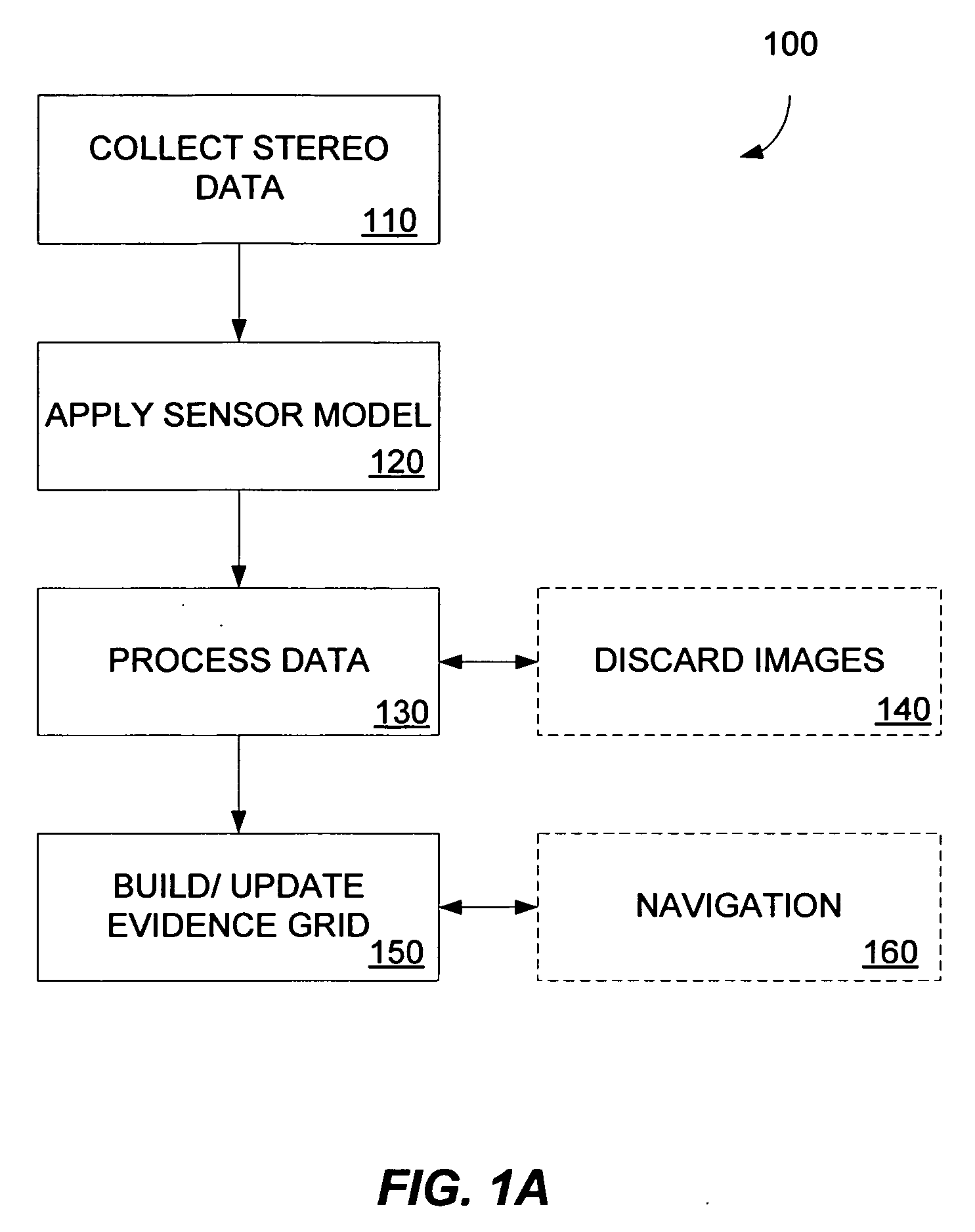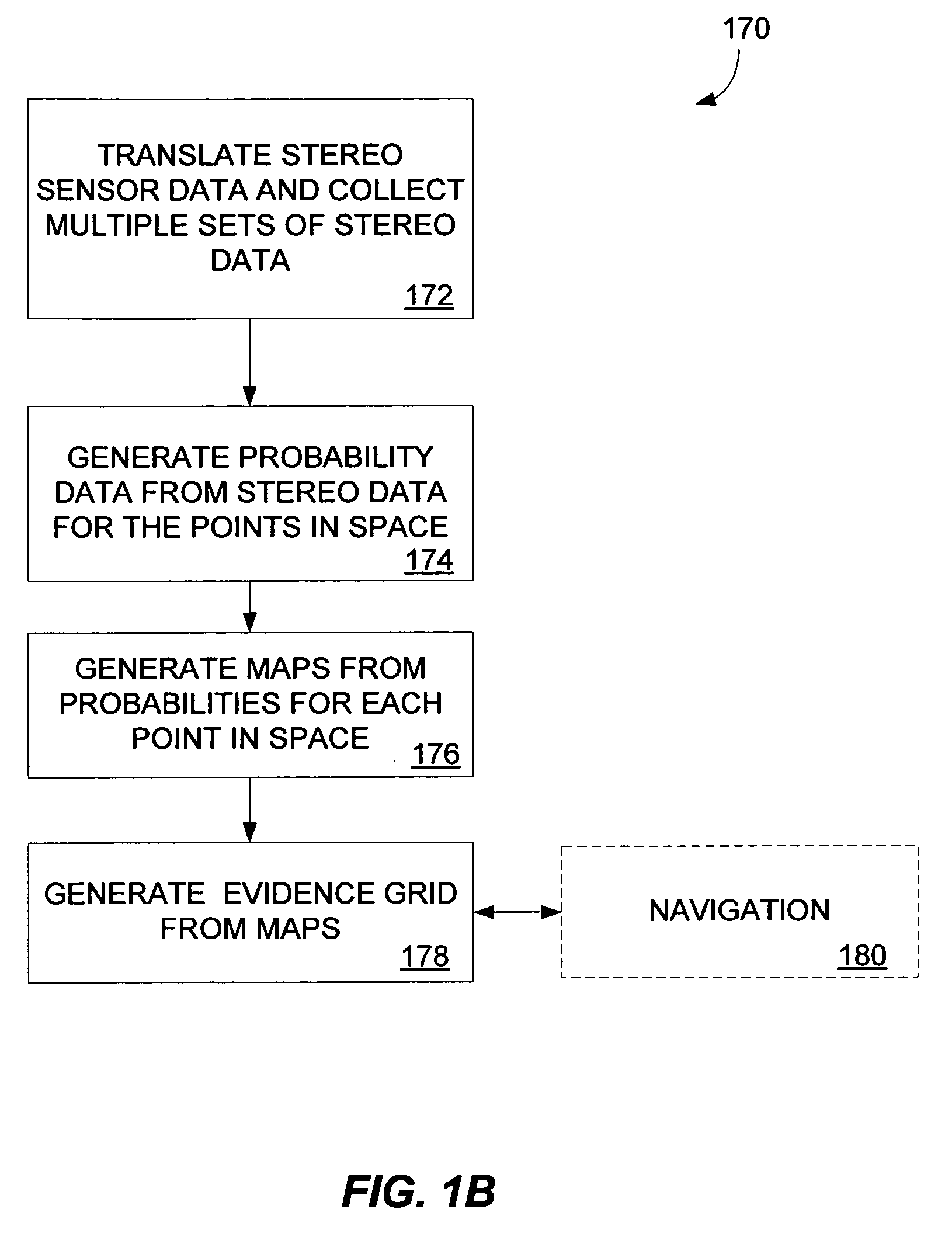Multidimensional evidence grids and system and methods for applying same
a multi-dimensional evidence and grid technology, applied in the field of multi-dimensional evidence grids and system and methods for applying same, can solve the problems of system malfunction or stoppage, inability to provide automated navigation, and failure to meet the requirements of the application
- Summary
- Abstract
- Description
- Claims
- Application Information
AI Technical Summary
Problems solved by technology
Method used
Image
Examples
Embodiment Construction
[0022] In accordance with the present invention, provided are a system and method for building improved multi-dimensional evidence grids representing a space or volume, also referred to as an “environment”, which could be a facility. Stereo ranging is used to collect information and data related to occupation of the environment by objects (e.g., walls, furniture, fixtures, or other tangible objects), as discussed in Related Information at the close of this description, which provides further detail on evidence grids. Stereo ranging involves the collection of data using at least one set of sensors. A set of sensors includes at least two data collection sensors, sometimes referred to herein as “stereo sensors” or “stereo ranging sensors.” Sensor models (SMs) characterize noise or other inaccuracies introduced by the stereo sensors, and are applied to improve the quality of the collected stereo data and information by removing or compensating for such noise or inaccuracies. Probabiliti...
PUM
 Login to View More
Login to View More Abstract
Description
Claims
Application Information
 Login to View More
Login to View More - R&D
- Intellectual Property
- Life Sciences
- Materials
- Tech Scout
- Unparalleled Data Quality
- Higher Quality Content
- 60% Fewer Hallucinations
Browse by: Latest US Patents, China's latest patents, Technical Efficacy Thesaurus, Application Domain, Technology Topic, Popular Technical Reports.
© 2025 PatSnap. All rights reserved.Legal|Privacy policy|Modern Slavery Act Transparency Statement|Sitemap|About US| Contact US: help@patsnap.com



